by John Haughley via The Epoch Times,
The need for data centers to drive 21st century cloud computing and win the AI race with China is a matter of such national urgency that Energy Secretary Chris Wright describes it as America’s “next Manhattan Project.”
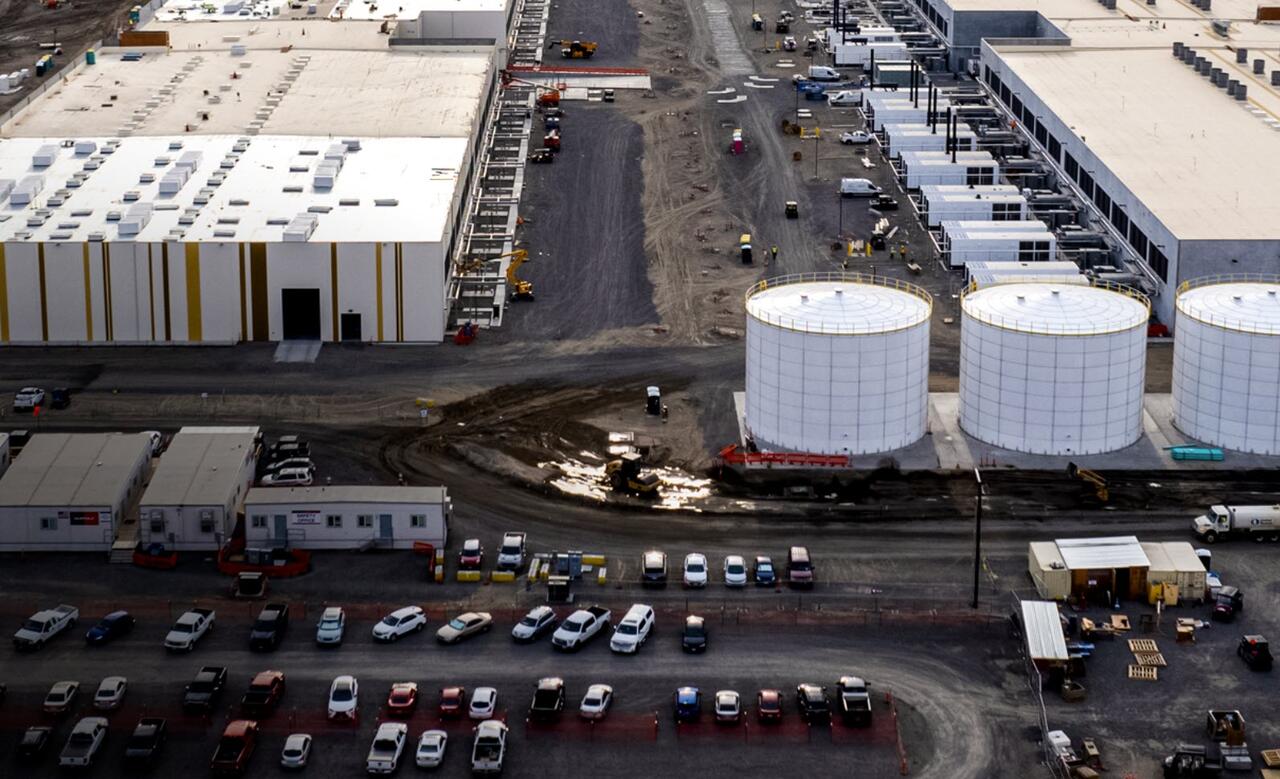
But assessing how many data centers—a ubiquitous yet vague term for “server farms,” supercomputer networks, bitcoin and crypto “mines”—exist right now in the United States is, in itself, a foray into quixotic cloudy computing.
There were a “reported” 5,426 data centers in the United States in March, according to Statista.
Meanwhile, Denmark-based Data Center Map ApS counts 3,761 listed data centers in the United States. Data Centers.com, a global technology marketplace headquartered in Colorado, maintains there are 2,483 of the centers now operating nationwide.
These and other estimates confirm the consensus that the United States has five to 10 times the number of functioning data centers as any other country in the world, including China. In fact, approximately half the planet’s data centers are in the United States, according to a ranking by Visual Capitalist.
And yet, as Interior Secretary Doug Burgum said during the April 30 Hill & Valley Forum, an annual gathering of congressional lawmakers and Silicon Valley venture capitalists, the need to build out the nation’s electric grid to power more data centers is “one of two existential threats we face as a country;” the other beingIran’s development of a nuclear weapon. If that need is not met, the nation will “lose the AI race with China.”
The projected energy demand for data centers will triple by 2028, the Department of Energy estimated last year. The North American Electric Reliability Corporation forecast the same number a year earlier.
These “load growth” assessments, coming after years of relative stagnation in electricity usage, were issued after the late-2022 advent of OpenAI’s ChatGPT. That shockwave rattled utilities, regional transmission operators, and state public utility commissions, sending them scrambling to scale-up electrical grids to accommodate this projected growth in data centers.
The result was a data center building spree. CBRE, a Texas-based commercial real estate services company, in late 2024 projected that more than 4,750 data center projects would break ground in the United States in 2025, “nearly as many … as already exist” nationwide.
New buildings to house data centers constitute “the fastest-growing segment of nonresidential construction planning,” according to a September 2024 Dodge Construction Network analysis.
However, there is no single-source registry documenting how many proposed data centers are now being reviewed before local planning boards.
That vagary was the genesis of Data Center Watch, a research firm tracking the trend and opposition to it, said founder Robert McKenzie, a former Columbia University adjunct professor of international and public affairs.
Much of the media coverage of data centers was “very specific, anecdotal” local news and social media reports, McKenzie told The Epoch Times.
“We hadn’t seen anybody pull together all the data. So we thought, ‘What would happen if you looked across the whole country?’ We weren’t sure what we were going to find.”
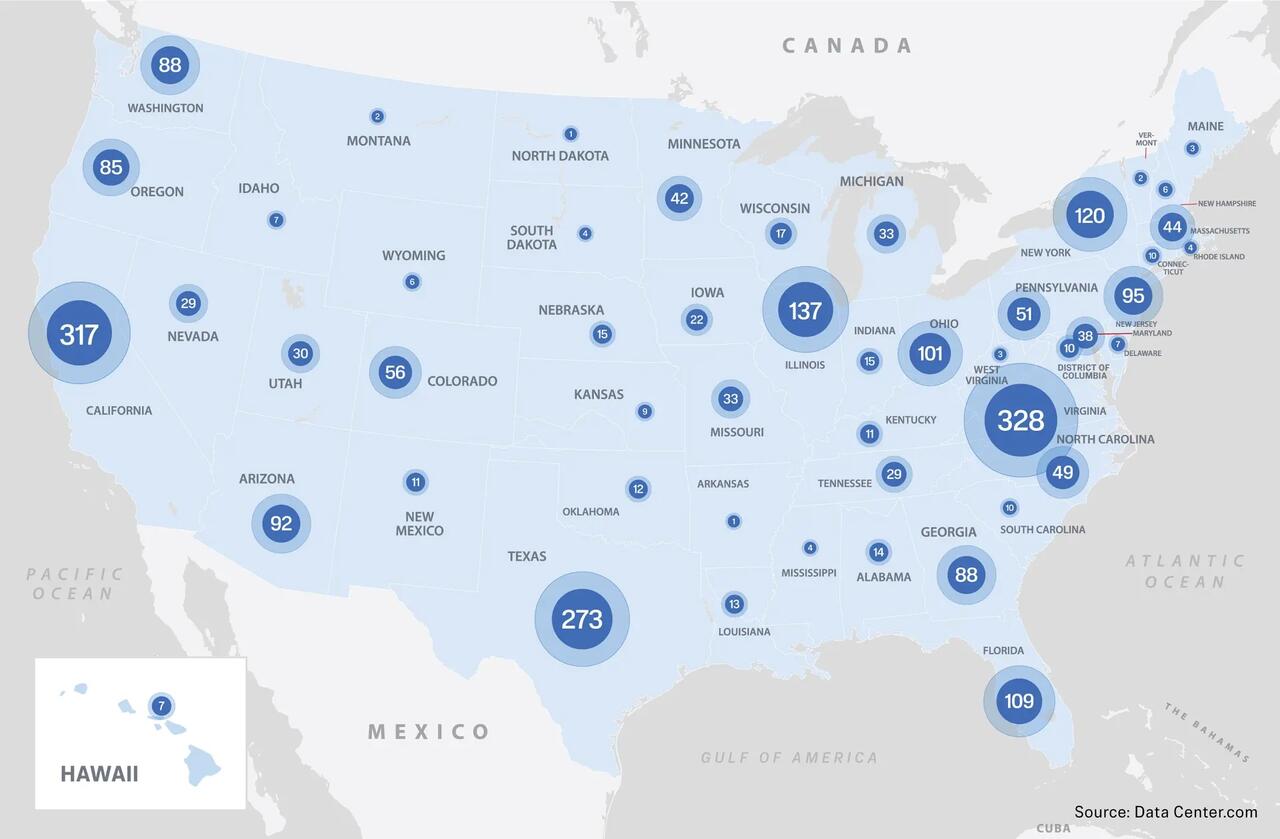
Data Centers.com, a global “technology marketplace” headquartered in Colorado, shows the locations of 2,483 data centers currently in operation in the United States. Illustration by The Epoch Times
In weekly updates gleaned from open-source Google searches, Data Center Watch has tracked two trends, McKenzie said, with the first being a larger number of data center proposals than initially thought.
The second trend is local opposition, which also helps track new data center projects.“There’s lots of anecdotal reporting from many, many outlets and bloggers about …local pushback here, pushback there; there’s more local opposition than certainly we would have imagined,” he said. “In other words, we keep hearing how these projects are coming, but they’re already here.”
In addition, load forecasting is difficult because many data center developers are submitting multiple proposals but only intend to build a few.At February’s National Association of Regional Utility Commissions’ Winter Energy Policy Conference, ALN Policy and Law President Angela Navarro told state public utility commissioners that utilities are seeing data center developers “cue shopping, looking for the best deal.”
Not in My Backyard
The rapid expansion of data centers is facing resistance from locals across the nation.
A March Data Center Watch report charted the emergence of at least 142 ad hoc local groups, across 28 states, “organizing to block data center construction and expansion” with $18 billion in proposed data centers “blocked” and $46 billion “delayed” between March 2023 and March 2025.
McKenzie acknowledged that the report, like Data Center Watch’s weekly updates, is an incomplete tabulation. It’s derived from “public statements or what’s happening at a town hall meeting, if there’s, like, a press release, or if there’s media coverage,” he said.

In an aerial view, an Amazon Web Services data center is seen in Stone Ridge, Va., on July 17, 2024. The United States had a reported 5,426 data centers in March 2025, a number the Energy Department projects will triple by 2028. Building data centers to power cloud computing has become a national priority as AI use soars, though the boom faces hurdles such as local opposition and power shortages. Nathan Howard/Getty Images
Nonetheless, what emerges is a tip-of-iceberg indication that data center proposals are roiling communities nationwide.
“Candidly, when we did [the March report], we thought, ‘Holy smokes, $64 billion in blocked or delayed?’” he said. “That gives you a sense of how much pushback there is at the local level.”
A February survey of 800 people in “16 key states targeted for AI data center development—where OpenAI and others are exploring expansion”—found 93 percent of respondents agreed that “cutting-edge AI data centers are vital to the United States.”
But only 35 percent of those queried in the survey “would vote ‘yes’ to data center construction in their hometown” if such a proposition was presented to them.
“There is clearly a disconnect between what the local residents experience and what is being sold to these communities from developers,” survey author Joe Warnimont said.
“It’s not necessarily about opposing technology in their communities,” he told The Epoch Times.
“It’s more that people in these communities want to maintain control over resources and development, whereas that’s clearly not necessarily the case right now.”
The Data Center Watch report, HostingAdvice.com survey, and a casual Google search unspool a gamut of objections. Some are unique to specific sites in specific communities, but most cite common concerns such as demand for electricity, need for water, noise complaints, and possible devaluation of nearby property values.
Opponents generally question whether the projects will generate the jobs other uses could create. They often allege that local governments are being seduced by developers into offering tax breaks and incentives—shielded by non-disclosure agreements. Or, they report that local governments are being preempted by state legislatures that limit municipal planners from rejecting or modifying proposals.
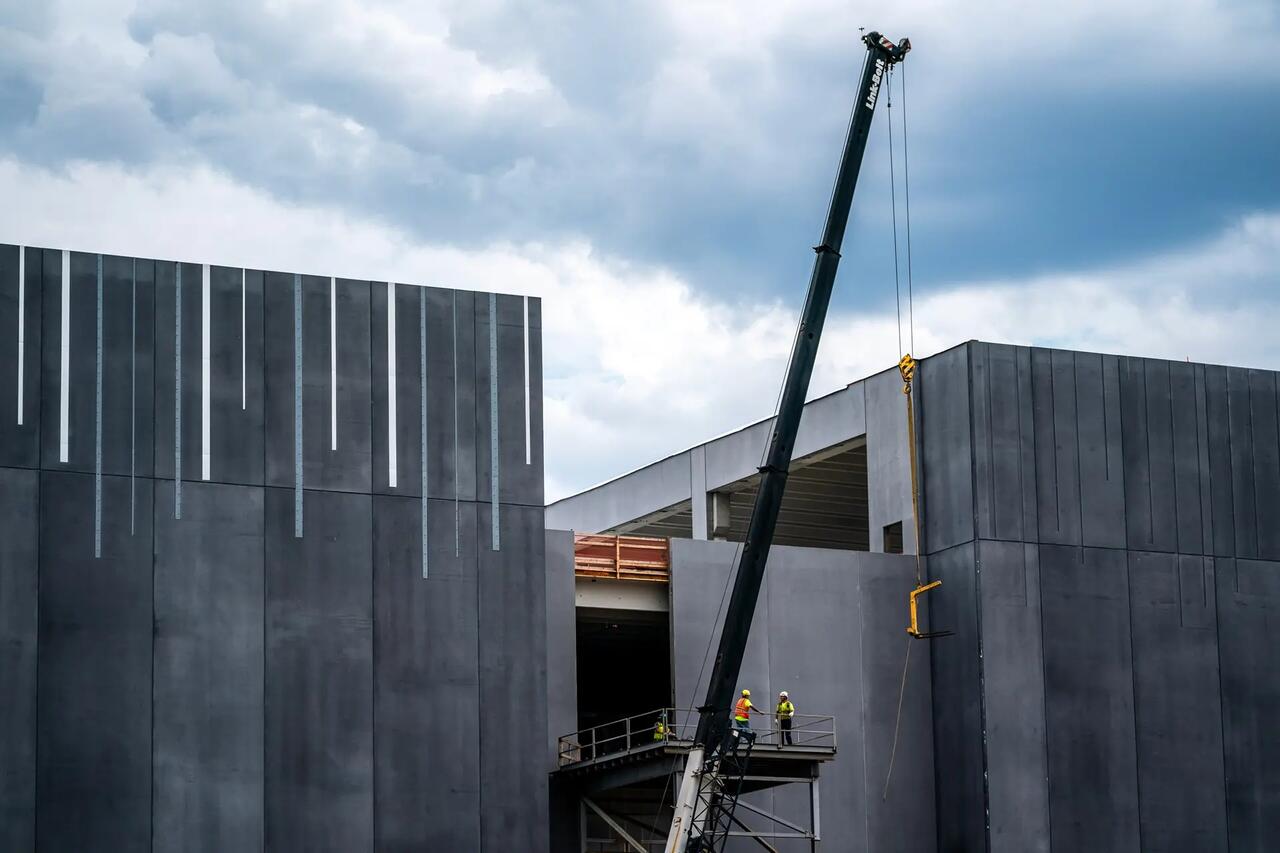
A construction crew works on a CloudHQ data center in Ashburn, Va., on July 17, 2024. As projected data centers boom nationwide, state utility commissions are racing to expand electrical grids to meet soaring demand. Nathan Howard/Getty Images
Bipartisan Backlash
The backlash against the projects is bipartisan. Locals don’t welcome data center projects despite enthusiasm for AI, making data centers the new not-in-my-back-yard flashpoint, the Data Center Watch report concluded.
“Where communities once rallied against factories, warehouses, or retail sprawl, they’re now opposing data centers,” the report states.
“From noise and water usage to power demands and property values, server farms have become a new target in the broader backlash against large-scale development. The landscape of local resistance is shifting—and data centers are squarely in the crosshairs.”
“I don’t know if [local opposition] has anything to do with political affiliation. It’s just, ‘Do I want this in my backyard or not?’” Warnimont said.
“This is absolutely across-the-aisle stuff,” Kamil Cook, a climate and clean energy associate with Public Citizen Texas, said about local opposition to data center development in the Lone Star State.
In rural Texas, that means data center opponents are typically bright red Republicans.
“Most of the groups we work with are, like, Republican-leaning people who are wanting to stop this build out,” he told The Epoch Times. “All the groups we’ve been supporting have had very close ties with their local Republican Party. It’s very local, like … the Republican county chair, for example.”
Four Waves
Data Center Coalition communications director Jon Hukill said most criticisms leveled at data center projects are standard land-use challenges, which would surface regardless of what the specific proposal was.
Hukill’s six-year-old, 36-member, Washington-based trade association represents “hyperscalers”—corporations such as Meta, AWS, and Microsoft—and “co-location” companies, such as Equinix, which own data centers leased to operators.
“I think what you’re seeing is reflective of the increasing number of states and communities where data centers are developing,” he told The Epoch Times. He noted that not only are these operations new in public perception but many are being proposed and built in “secondary” and “tertiary” markets that historically have had little industrial development.
Hukill said there have been four general waves in the evolution of data centers, which emerged in the 2000s with the growth of the internet.
The first wave, he said, was in New York and New Jersey, “because of the closeness to Wall Street—the need for very fast transactions.”
The second wave took root in California’s Silicon Valley and in northern Virginia, which is commonly referred to as “Data Center Alley” and has the world’s most dense concentration of data centers, Hukill said.
The third wave is unfolding in secondary markets, such as suburban or exurban communities in Ohio and Georgia, he said, and increasingly, in tertiary markets as well.
“Really, just in the last couple of years, we’ve seen the development of tertiary markets where there’s really been very little history of data center development whatsoever. Think of places like Mississippi, Alabama, Iowa, Indiana,” Hukill said. “This is where the opposition is coming from.”
There are numerous reasons for that development, such as less expensive land, affordable energy, water availability, and local governments eager for economic development.
“There’s been much more interest in [tertiary markets] where you’re starting to see more and more investments—you know, ‘billion with a B’-type investments—in some of those states where, typically, those were only happening in those primary markets,” Hukill said. “It’s important to understand the data center industry is not monolithic.”
Land-use attorney Colleen Gillis, founder of Reston, Va.-based Curata Partners, is a veteran of planning and zoning battles before local boards in Loudoun County and elsewhere in Data Center Alley. She’s also a member of the Urban Land Institute’s Data Center Product Council. The organization’s Local Guidelines for Data Center Development address common issues raised by developers and critics.
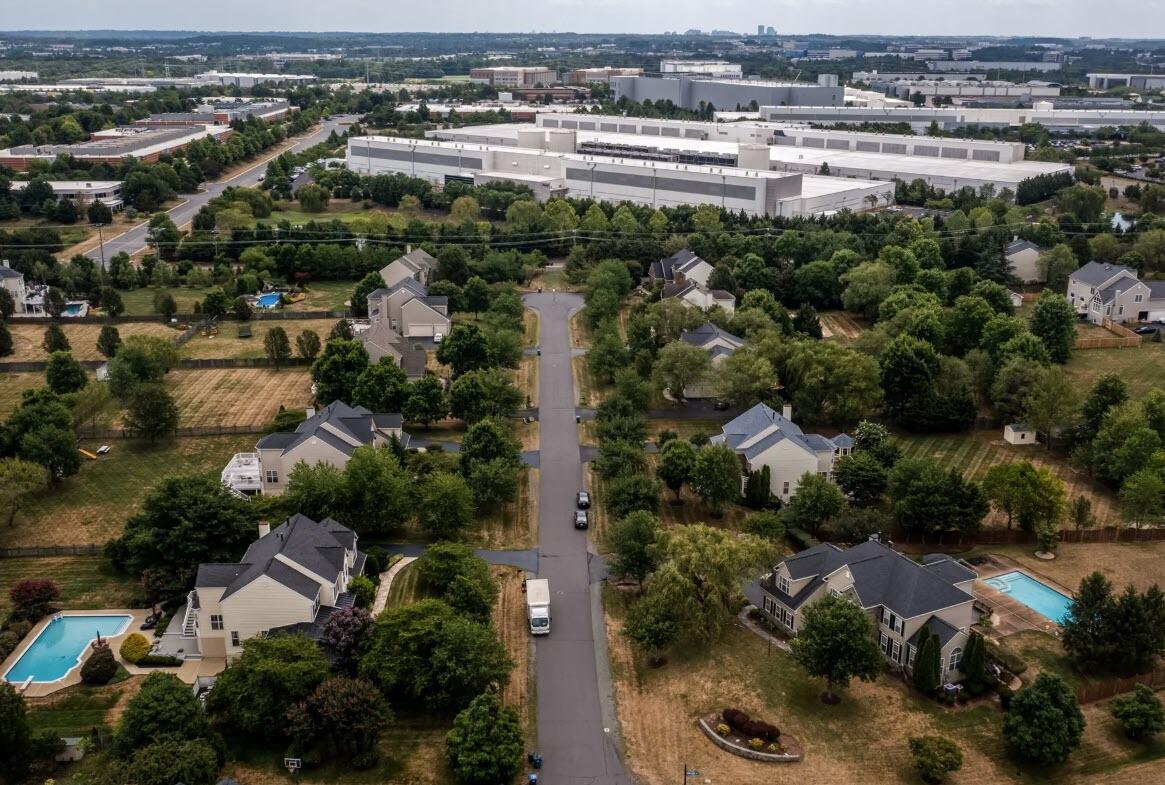
In an aerial view, data centers are seen near a neighborhood in Ashburn, Va., on July 17, 2024. Northern Virginia, known as “Data Center Alley,” hosts the world’s highest concentration of data centers. Nathan Howard/Getty Images
“You know,” Gillis told The Epoch Times, “some of the challenges data centers have are contextual. Where’s it located? What’s the visual or compatibility impact there?
“In some jurisdictions where, perhaps, the population growth is rapid, and traffic is a challenge, and school building or school capacity is a challenge,” Gills continued, criticism is general angst over growth and development, not necessarily specifically about data centers.
Developers have recognized that these local challenges are legitimate, she said. “It’s a little bit like AI learning. Data center companies get better at understanding what do they need to do to be a good neighbor.”
But “misconceptions” remain, Gillis said, including, “If you have a data center in Place A, the data center you put in Place B is going to be the same—the same impacts and the same challenges, the same use of water, the same use of electricity.”
Point Counter Point
The most commonly cited issues with proposed data center projects are their voracious demand for electricity and water, resulting noise, and job generation.
Other issues, such as the tax revenues the projects generate, development incentives shielded by non-disclosure agreements, or state legislatures preempting municipal planners from rejecting proposals, are also among common issues, each meriting separate analyses.
Electricity
Fast-tracked data center development will cost ratepayers in 13 Midwest states as much as $9.4 billion beginning this year, according to Monitoring Analytics, the grid’s independent market monitor. Those 65 million consumers span 1,100 member utilities within the PJM Interconnection regional transmission organization.
According to a December 2024 Energy Department analysis, data centers consume 10 to 50 times as much energy, per square foot, as a commercial office building of similar size.
An Amazon Data Services data center campus in Pennsylvania’s Lucerne County will eventually consume the same electricity it takes to power the entire city of Pittsburgh, a senior manager at Amazon, told the Pennsylvania Capital-Star.
Goldman Sachs Research forecasts global power demand from data centers will increase 50 percent by 2027 and by as much as 165 percent by the end of the decade.
And whereas data centers consumed about 4 percent of the country’s electricity in 2023, they could account for up to 12 percent of total U.S. electricity consumption by 2028, according to a December 2024 Lawrence Berkeley National Laboratory report.
Protect PT Executive Director Gillian Graber, whose nonprofit opposes a proposed data center project in Westmoreland County, said among reasons local residents are concerned is “the demand that data centers will bring onto the grid.”
“Pennsylvanians could see an increased cost in utilities as a result—electric and gas utilities,” she told The Epoch Times.
“The availability of power is the pacing challenge of industry, and that’s true of the data center industry, but it’s also true of all 21st century industries,” Hukill said.
“Part of the reason [to expand the grid] is because of the demand for data center services. Partially, it’s because of re-shoring and manufacturing. It’s the electrification of everything, businesses, electric vehicles, appliances. These are large loads, too.”
Many data center developers prefer renewable energies such as wind, solar, and nuclear rather than natural gas or coal, but cannot wait for small modular nuclear reactors to become widely available. They’ll go where energy is available. That’s according to Aaron Tinjum, vice president of energy policy for the Data Center Coalition, speaking during a February energy policy conference in Washington.
Many are also seeking to “co-locate” on utility power plant sites, retired coal-fired plants, or to build their own electric generators that, instead of tapping into the grid, can add capacity.
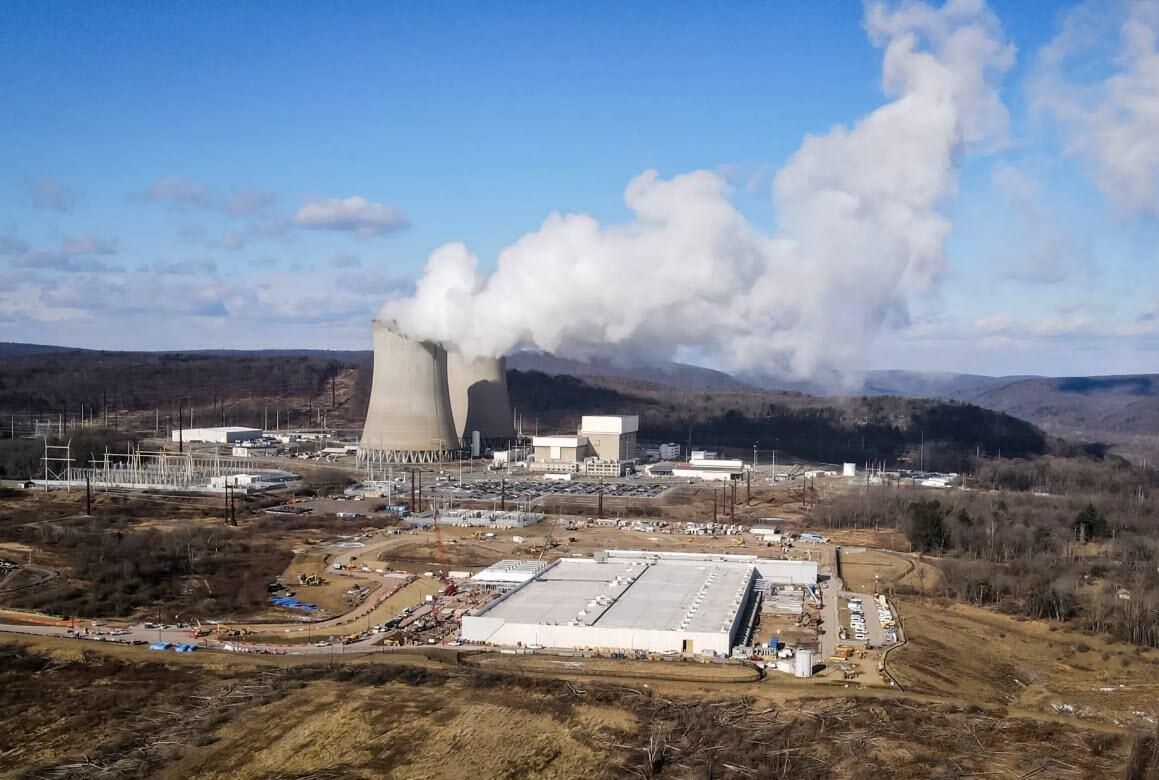
A data center owned by Amazon Web Services (front R) is under construction beside the Susquehanna nuclear power plant in Berwick, Pa., on Jan. 14, 2024. Ted Shaffrey/AP Photo
“We’ve got clients who said, ‘You know, look, it’s going to take you too long to get the power to us. We‘ll figure out self-generation between now and then [and] whatever we don’t need, we’ll sell back to you,” Gillis said.
Data centers need baseload power, Loudoun County Supervisor Mike Turner said in his influential June 2024 white paper for local planners, A Strategy for a Changing Paradigm.
Renewables aren’t sufficient for data center needs, he notes. “The average data center would require 1,000 acres of solar panels,” he said, noting the 62-turbine wind energy plant on Martha’s Vineyard would only provide enough juice to support about 10 of Loudoun County’s data centers.
Hukill cited a December 2024 analysis by Virginia’s Joint Legislative Audit & Review Commission, which said that “Data centers are currently paying the full cost of service for the energy they use, and current rates appropriately allocate costs to the customers responsible for incurring them” without raising costs for others.
Water
Data centers consume a great deal of water to cool servers. According to a July 2024 University of Tulsa analysis, a single data center can consume up to 5 million gallons of water a day. That’s “enough to supply thousands of households or farms.”
Microsoft’s 2022 Sustainability Report showed that its data center water consumption increased 34 percent from 2021 to 2022. A Meta 2023 report said its data centers used approximately 1.29 billion gallons in 2022.
But data center technology is evolving and few “data centers 2.0 and 3.0” need that type of water use, with most recycling water and using different technologies to cool servers, Gillis said.
“A couple of years ago, all the data centers [used] evaporative cooling. That meant that they used a lot of water to cool down the data center.” Few do that now, she said.
Citing Virginia’s Joint Legislative Audit & Review Commission report, Hukill said in 2023, “83 percent of data centers in Virginia used the same amount of water—or less—than the average large office building.”
However, in the same tertiary markets where energy is often available and relatively inexpensive, such as outside Phoenix, Arizona, where dozens of data center campuses were operating in December 2024, water can be scarce.
A May Bloomberg News analysis determined that two-thirds of data centers built in the United States are “in highly water-stressed areas.” About 20 percent of “rely “moderately to highly stressed watersheds” resulting from drought and other factors, Berkeley Lab research scientist Arman Shehabi wrote in 2024.
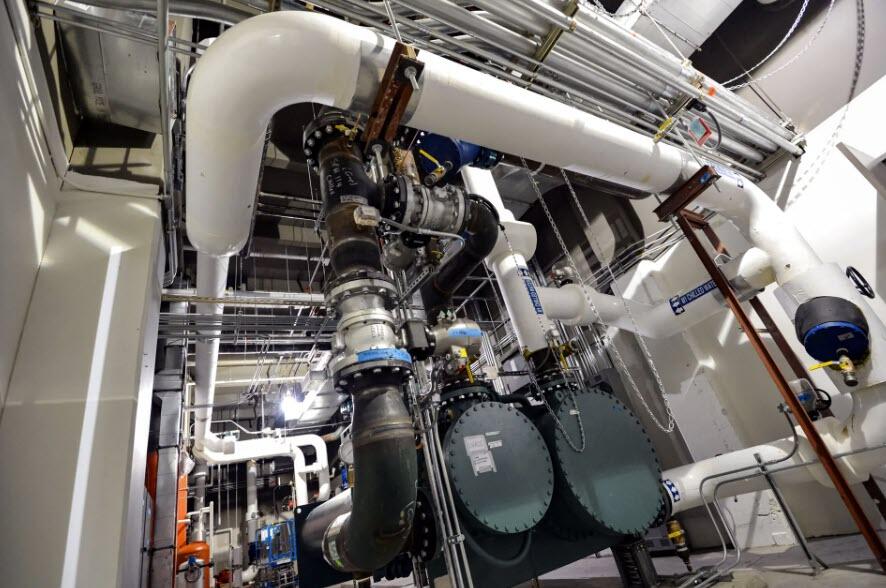
Water cooling pumps and pipes are seen at Intergate.Manhattan, a data center owned by Sabey Data Center Properties, in the lower Manhattan area in New York on March 20, 2013. The vast water use of data centers is one of the top concerns for proposed projects nationwide, along with their heavy power demand, noise, and limited job creation. Stan Honda/AFP via Getty Images
Data center water-use can be a factor even in areas with abundant water resources, such as western Pennsylvania.
“In addition to your typical site location, noise, light pollution, those kind of things, water usage is a big concern,” Graber said. “These data centers will be run by gas-fired power plants, and gas-fired power plants need gas, and we already have a tremendous amount of water usage from the fracking industry on our local resources.”
In Pennsylvania’s Westmoreland County, Beaver Run Reservoir, a major regional source of drinking water, was affected by extended periods of drought “at least two years in a row,” Graber said. Meanwhile, “fracking companies were still withdrawing our water. So while every day Pennsylvanians were asked to conserve water, the fracking industry was still taking the water.”
Water used to cool data center servers can be used for “other things like golf courses.” It eventually finds its way back into creeks and streams and is processed through the water cycle, Graber said.
However, water used to frack the gas that fuels data centers “has to be put into injection wells. It can’t be cleaned to the point where it’s going to be used for human consumption and, so, it completely takes this water out of the water table.”
Noise
Generators, HVAC cooling systems, and drawing power from energy from the grid can produce a buzz “comparable to the noise of a lawnmower or a busy city street.” At up to 96 decibels that could lead to hearing loss at sustained exposure, according to a Sensear study.
But again, as a Data Center Knowledge primer points out, noise complaints from nearby residents have prompted adjustments such as “mufflers” and “dampeners” to keep noise levels off-site down.
Data centers are actually “quieter than many common sounds—jets, lawn-mowers, conversations at three feet,” Hukill said. Data center sound “is not harmful to human hearing, and is rarely loud enough to violate noise ordinances,” he said, adding, “A large majority of data centers do not generate noise complaints.”
That claim is documented in the Virginia Legislature analysis, he said. “There are now sound dampeners. If a community says that the chilling units that sit on top of a data center [are] maybe too loud, data center companies have worked to put in sound dampeners to reduce that noise.”

Server banks inside a data center at AEP headquarters in Columbus, Ohio, on May 20. John Minchillo/AP Photo
Job Generation
According to Area Development Magazine, building a typical data center creates hundreds of jobs for skilled trades such as electricians and engineers. But long-term, on-site employment generated by data centers is generally lower than that of other industries like manufacturing or corporate headquarters, according to an August 2024 Pro Publica report.
The report noted that “data centers employ relatively few people on a permanent basis. Overseeing the servers doesn’t take much labor compared with other large industrial outfits, and the facilities are easy to distinguish from other hulking manufacturing buildings because of their small or mostly empty parking lots.”
The relatively few jobs—some describe data centers as “one job for every two acres occupied”—was a recurring criticism in the HostingAdvice.com survey, Warnimont said.
“I would definitely agree” that’s among the biggest reasons why people oppose them, he said, noting that many people say, “If it brings a ton of jobs … maybe I would like it. But if not, maybe not.”
However, the lack of job creation surrounding data centers “is a common misperception,” Hukill said, pointing to a February PriceWaterhouseCoopers report. The report determined that between 2017 and 2023, “the data center industry supported up to 4.7 million jobs across the country,” with each direct data center job supporting “more than six jobs elsewhere” in the United States.
“There might be this common conception out there that if you go to an average data center, it may have 50, maybe 100, full-time badged employees,” he said. “But those numbers really don’t capture the scope of the number of jobs that are supporting that data center.”
For instance, Hukill said, a co-location or “colo” data center that leases space to computer network operators, similar to the way a retail shopping works, adds another layer of employees who manage and maintain the property.
In that situation, in addition to employees of the company that owns the building, you have “all the other tenants, employees that are technical workers and high-tech workers that keep the servers running,” he said. Those employees are “typically not counted” in many employment counts.
Transparency
Objections may vary from proposal to proposal and site to site. But a common claim is that state and local governments offer data center projects tax incentives, often shielded from public scrutiny through non-disclosure agreements under the guise of proprietary corporate intelligence.
The lack of transparency fosters suspicion and anger, Cook said. “Just from our experience, it seems like one of the big concerns is that, yeah, there is no community outreach.”
He added, “There’s no method by which the community can be informed in a way that actually makes it seem like their voice is valued and that they have a choice in these matters.”
https://www.zerohedge.com/technology/data-center-construction-boom-faces-local-resistance-28-states













